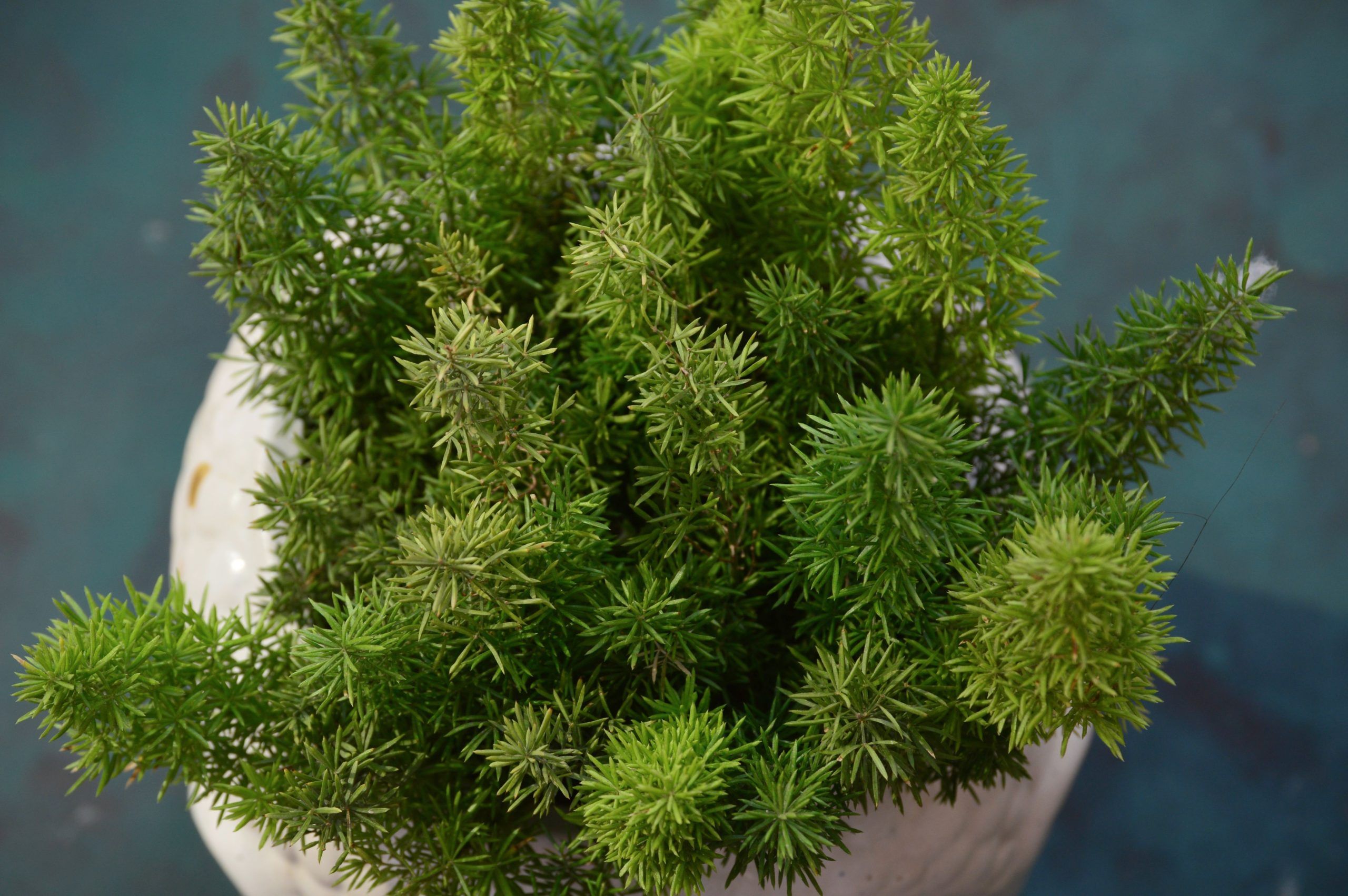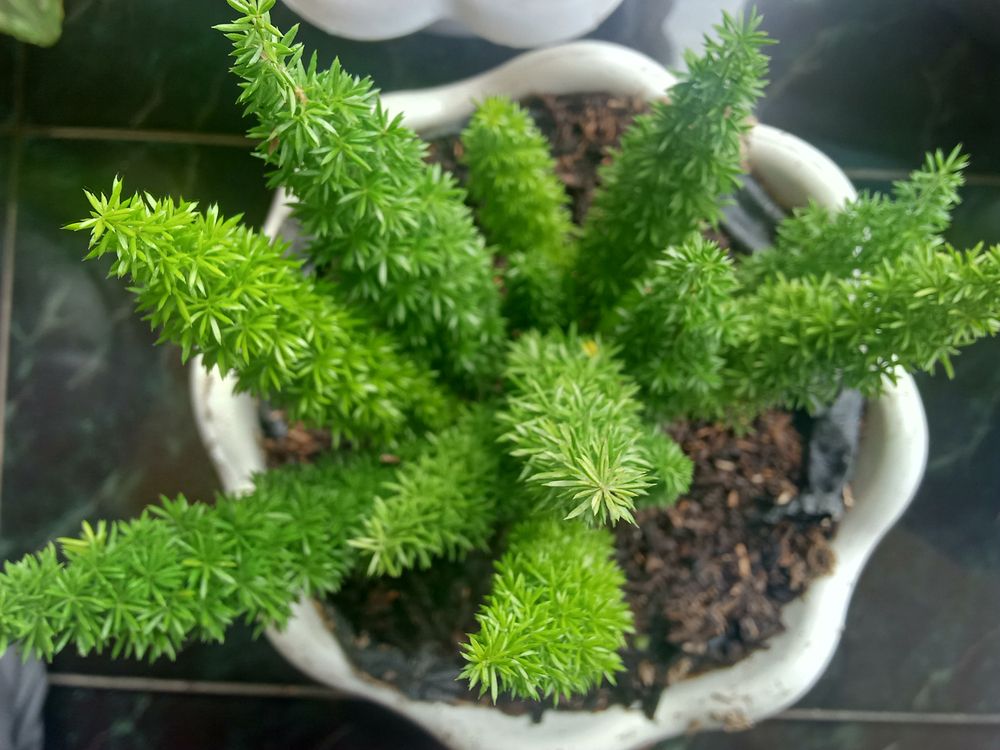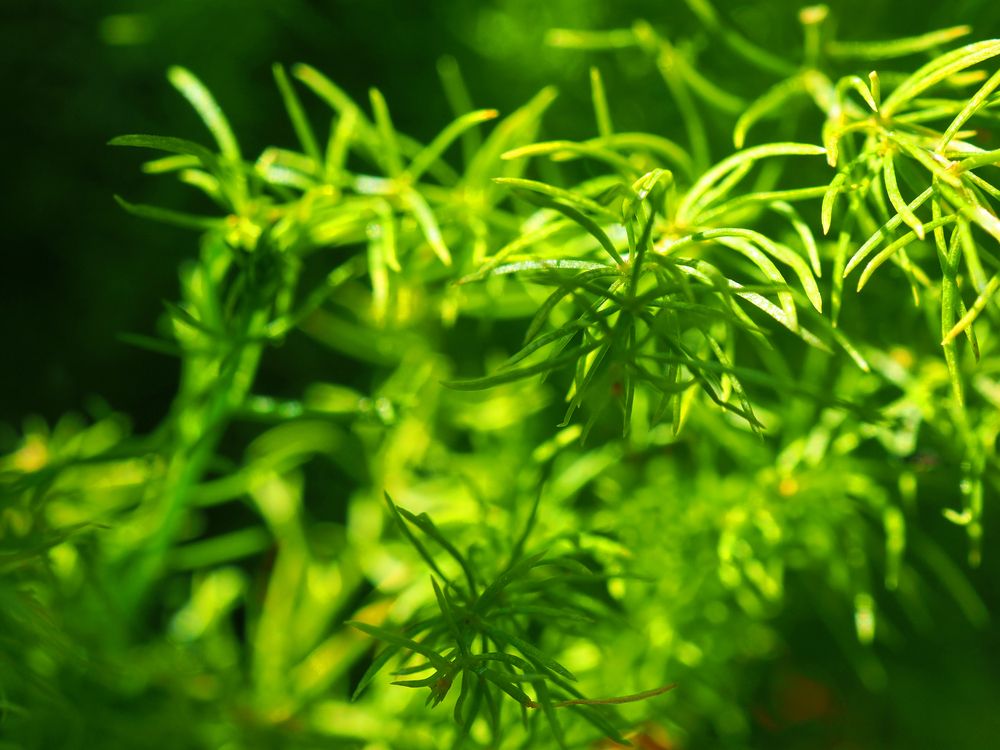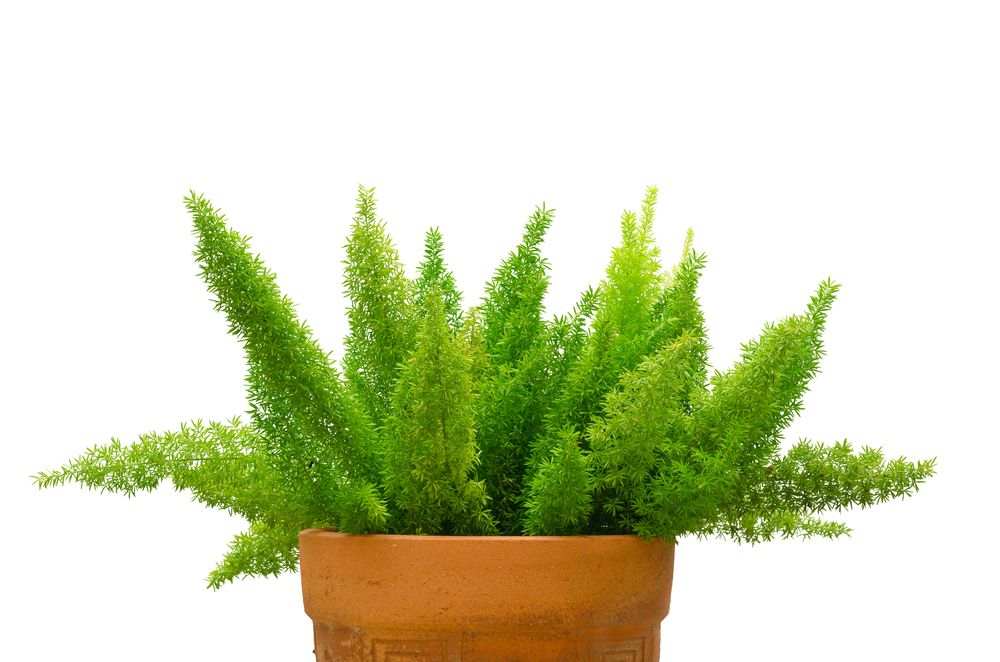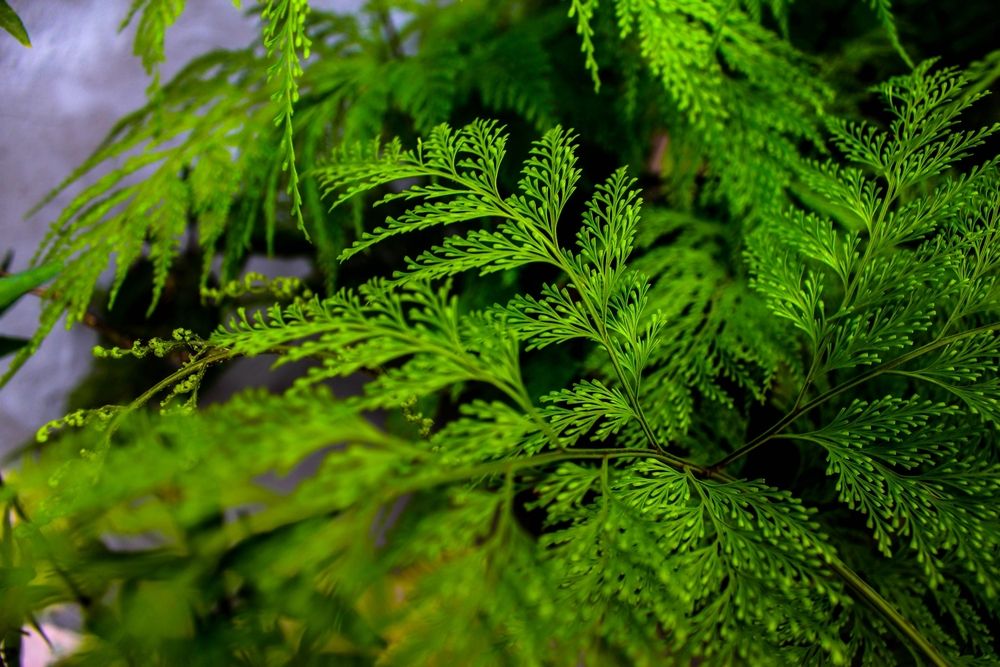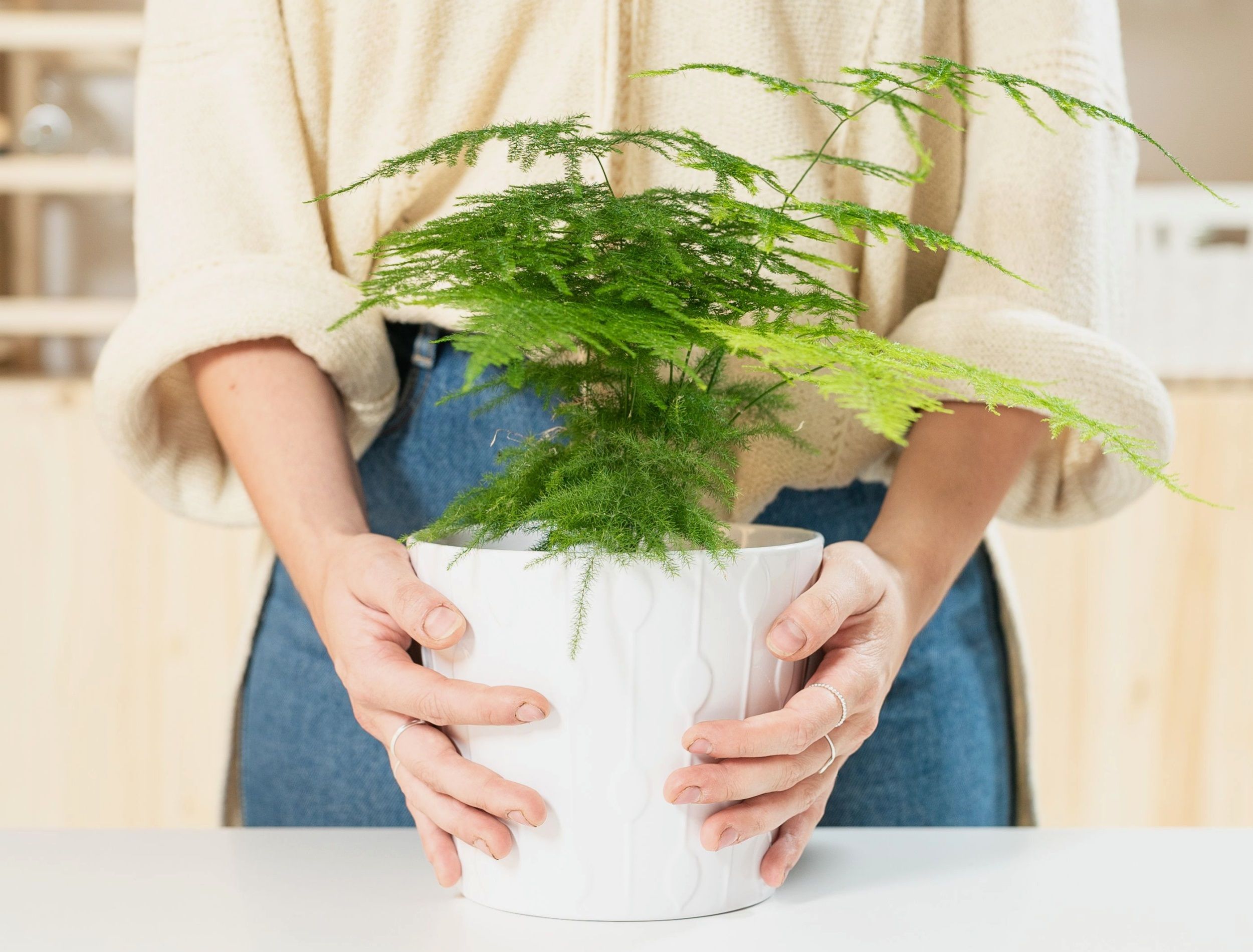Asparagus ferns are one of the most beautiful houseplants you can have in your home. Their intricate feathery foliage brings an exotic and lush feeling to any space. Whether you're looking for a smaller variety or something with texture, there are varieties of asparagus ferns that you can grow at home to beautify your indoor space!
Here are four types of asparagus Ferns that are great to grow indoors and vibrant enough to provide an eye-catching addition to your living room or office décor.
Foxtail Fern
Image credits: Alfan Nasrul via Shutterstock
'Foxtail Fern' (Asparagus densiflorus) is an excellent choice for those looking to bring a bit of the tropics indoors. This species has long cascading fronds that give off a light, airy look.
To care for 'Foxtail Ferns' indoors, place them in a partly shaded area and use a well-drained potting mixture. Water these plants regularly from spring through autumn and give them rest over the winter months by reducing the amount of water they receive.
Although you should keep your fern at a minimum of 50 degrees Fahrenheit in winter, ferns prefer a cooler day time temperature of 72 degrees Fahrenheit. This will ensure your 'Foxtail Ferns' thrive and look beautiful for years to come. If your 'Foxtail Fern' is outside, temperature dips below 25 degrees Fahrenheit will drastically harm them.
Sprenger's Fern
Image credits: Sarah121 via Shutterstock
'Sprenger's Asparagus' (Asparagus densiflorus) is another popular variety with dense clumps of wiry stems covered by delicate foliage. These hardy plants are ideal for people who don't have outdoor space or want to bring a bit of nature indoors.
'Sprenger's Asparagus Ferns' thrive in partial shade and don't require high humidity, medium levels of 40 to 60 percent is ideal. Same as the 'Foxtail Fern,' water your plant when the soil is dry during the spring and summer months. This could be once a week, but best to check prior to hydrating your plant. Reduce watering over the winter. It will appreciate a wide temperature range but keep it no lower than 50 degrees Fahrenheit in the winter.
With regular pruning, your fern will bring a touch of greenery to any home and look stunning all year round.
Cwebe Basket Fern
Image credits: kttpngart via Shutterstock
The 'Cwebe Asparagus Fern' (Asparagus densiflorus) is a must-have for any home! Its graceful spreading fronds and wider needle-like leaflets make it an eye-catching addition to your indoor décor. The new foliage of shiny, copper-bronze color highlights the exceptional beauty of this plant's form.
You can grow it indoors, making it ideal for those with limited outdoor space. It also does well in containers or hanging baskets, and its lush fronds add an elegant touch to any covered patio or porch. And if you're feeling creative, try incorporating this airy greenery into a centerpiece or floral arrangement.
This hardy little fern is also low-maintenance. It can tolerate some drought and periods of neglect once established, and it'll happily grow in almost any soil. With its bright light or semi-shade needs and minimal fertilizing requirements, it has gorgeous feathery foliage that will add a unique touch of greenery to any indoor space. Plus, you can give it an application of well-rotted compost twice a year, and it will be happy! These ferns are perfect even if you have the blackest of thumbs!
Lace Fern
Image credits: Broken White via Shutterstock
The 'Lace Asparagus Fern' (Asparagus setaceus) is a beautiful and easy-to-care-for houseplant that adds texture and color to your home. Its delicate and cascading foliage creates an elegant look in a living room or bedroom.
It enjoys a broad range of temperatures and does not need much humidity. Best grown in well-drained soil, this plant prefers bright filtered sun. Avoid direct scorching afternoon sun as it may cause leaf burn.
Water regularly from the spring to fall for best results. You can take this hardy houseplant outside over the summer and then bring it back inside in early fall.
How to Care for Asparagus Ferns
Image credits: Samuel V.Rocheleau via Shutterstock
If you're looking for a lush, bright green addition to your home, Asparagus Ferns might be just the plant for you! These ferns are low-maintenance and make great houseplants. With the right care, they will thrive indoors and bring life to any room.
Water
These ferns are quite thirsty plants, so you'll need to check the top two inches of soil for dryness and water as needed. When watering, moisten the soil thoroughly until it's damped all the way through.
And don't forget that your pot needs drainage holes to drain any excess water. Otherwise, you risk your Asparagus Fern sitting in water, which may lead to root rot. If you notice brown fronds on your fern, this could indicate not enough water, so give it a good drink!
Soil
To ensure the health and success of your Asparagus Fern, give it the right environment with light, well-draining soil. If you find your soil feeling too heavy, don't hesitate to add peat moss. It will help with drainage and prevent water from becoming waterlogged, which could lead to root rot problems.
Light
To keep your asparagus fern looking its best, the key is providing it with bright indirect light. Place your potted friend back from the window or protect it from harsh direct sunlight using a sheer curtain if need be.
You'll know that it's receiving too much light if you notice yellowing fronds; in this case, move the plant away from the light source or risk damaging its delicate foliage.
Fern It Up!
The possibilities are endless when it comes to decorating with asparagus ferns. It's an ideal choice whether you're looking to spruce up your living room or create a beautiful office workspace. Add an asparagus fern to spaces that need a bit of natural asthetics!
Do you have any tips or tricks for growing an asparagus fern? Leave a comment below!

